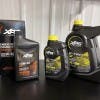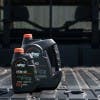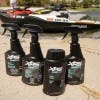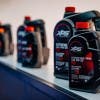Viscosity is often simply thought of as a liquid’s thickness or the rate at which it will flow. More accurately, viscosity is defined as the resistance to flow in terms of friction. Everything – from water to peanut butter – has a viscosity index. Engine oil comes in a variety of viscosities, which are classified by specific test methods and temperatures. Using the proper viscosity engine oil is not only critical for prolonged engine life, but also maximizing performance and economy as well.
How we should read or understand the “XW-XX?”
Most oil recommendations for recreational vehicles, as well as marine engines and passenger cars are multi-grade formulas. You’ll find multiple viscosity ratings on the bottle: one for cold/cold-start conditions and one for operating conditions (once the engine is warmed up). Understanding the ratings on the label is the key to making the right viscosity choice for your vehicle.
Using XPS 5W-40 as an example, the first number (5W) is the base oil viscosity – or the starting point of the oil before you start your engine. This rating is critical for determining the oil flow when cold to properly protect an engine at start up.
The “40” as the second number is the oil viscosity using the viscosity improver to enhance the engine protection at operating temperature.

Why should I use the right viscosity in my vehicle?
First and foremost, the primary goal of any manufacturer recommendation is to protect the engine and its critical components. Engine oils with different viscosity will have different flow rates that could impact engine health, and engine design plays a role in what oil viscosities are recommended.
Using an oil with a viscosity that is too high will cause the engine to work harder to pump it, resulting in higher heat and/or fuel consumption. Oil flow could be restricted somewhat to critical engine parts that require constant lubrication.
On the other hand, oil with a viscosity that is too low might improve efficiency or overall power output. That sounds great but using an oil with a lower viscosity and lower corresponding oil film strength can accelerate engine wear.

What grade of oil is best for my vehicle?
It’s always best to use the recommended viscosity oil. But note there are both seasonal or geographic changes to recommendations determined by ambient temperature or usage, as well as exceptions for allowable substitutes.
In general, you are usually safe to use a lower base viscosity oil if you desire. You may possibly want easier starting for your vehicle in colder temps. In this case, using a 0W-40 in place of a 5W-40 may be perfectly acceptable (always refer to your owner’s manual for verification). Here are a few examples where you’ll find different base viscosities used:
Snowmobile (4-stroke) – Virtually always a 0W-XX oil. Snowmobiles are almost always run at cold temps, stored in outdoor environments and are subjected to harsh starting conditions. You’ll want an oil that flows easily in extreme cold conditions, so oil quickly flows to your engine’s critical components upon starting.
Motorcycles and 3-wheeled on-road vehicles – Here you’ll find 1W-30 or 10W-50 oils used frequently. These vehicles are typically operated in warmer conditions and the oil does not need to be as free-flowing in colder temps as it would be in a snowmobile application.
Off-road vehicles – This is an application where you might have different oil recommendations based on a wide range of operating conditions. The side-by-side you use to take the kids to their favorite swimming hole in the summer might be the same thing you use to plow the snow from your driveway in the winter. Obviously two very different environments, and a situation where if your manual recommends 10W-40 as a summer oil and a 5W-40 as a winter oil, a 5W-40 would be an ideal choice for year-round use. Another alternative, if you’re using the vehicle in warmer climates and/or in high load conditions, this is where a 10W-50 would provide better high temperature protection and higher performance, if this is in a table of recommended viscosities from your manufacturer.
When shopping for oil, every vehicle has a recommended oil viscosity and weight. Manufacturer’s provide recommendations because this is the type of oil that offers maximum performance, economy and minimal wear from your engine. It’s always best to use the recommended oil for your vehicle.
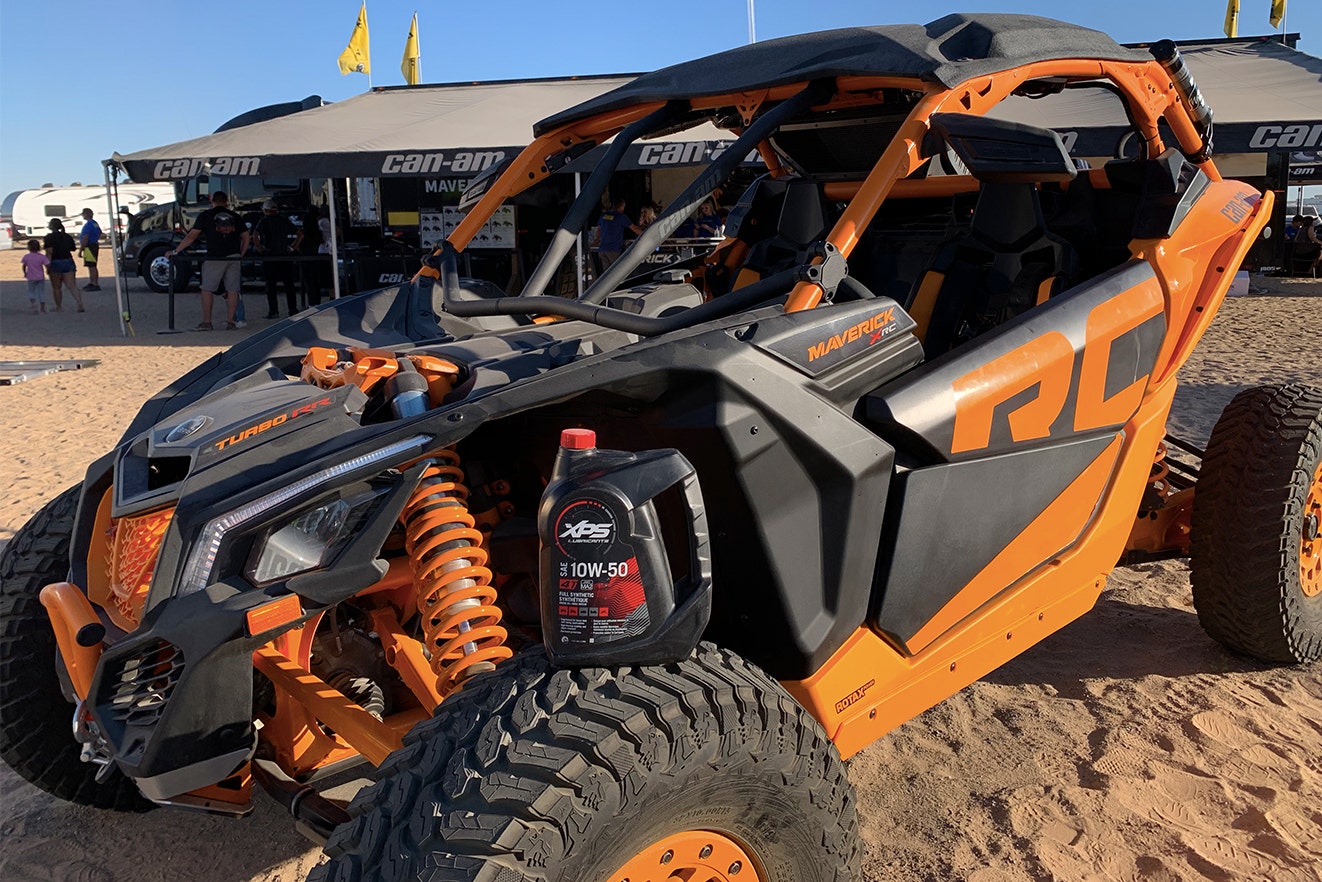
What happens to my vehicle if I use the wrong viscosity?
Most engine damage occurs at engine start, when the oil is drained out of the engine and in the sump. Oil that flows quickly from the sump to critical engine parts is paramount. Having an oil that is too high of a viscosity at engine start means unlubricated, metal-on-metal contact longer than a lower viscosity oil would allow.
Let’s go back to the off-road vehicle example: A vehicle such as a Can-Am Defender in the wintertime will be best protected at engine start with a 0W-40 rather than a 5W-40, which in turn protects better than a 10W-40 at startup.
Using an oil too low in viscosity compared to the recommended high-temp viscosity could result in accelerated engine wear, too, as the oil film required for operating temperature is too thin. In other words, the 5W-40 oil will protect your engine better at higher operating temps than a 5W-30 oil.
The bottom line: manufacturers provide oil recommendations because that’s what gives your engine the best protection in the widest array of operating conditions.

